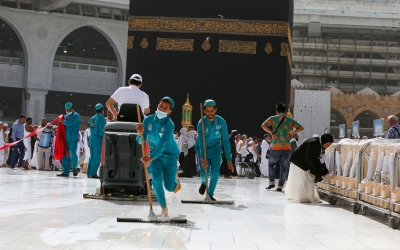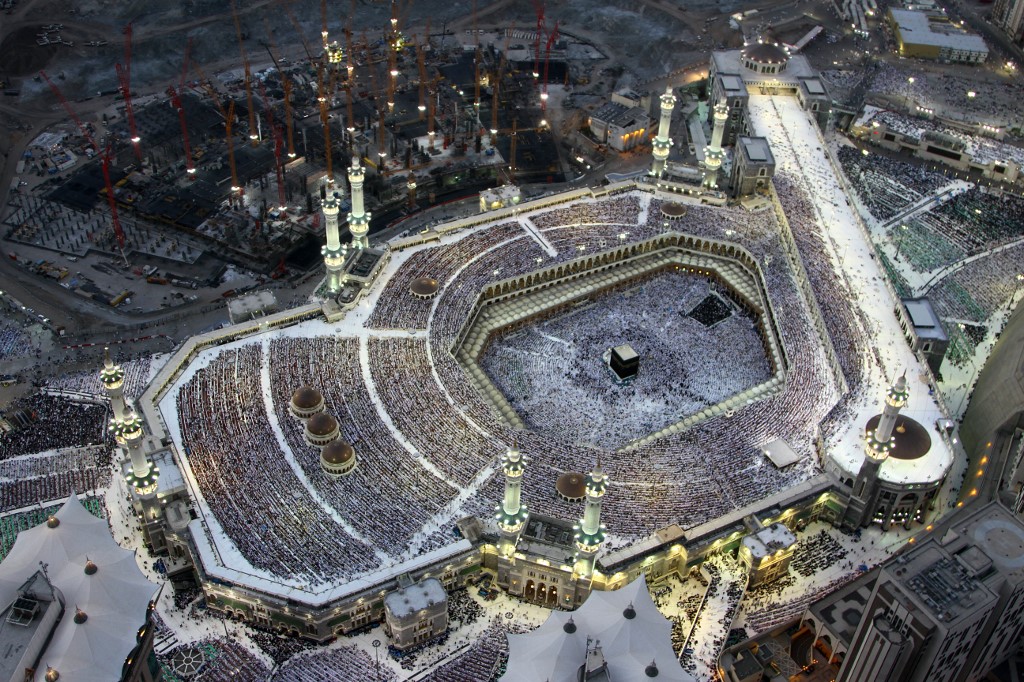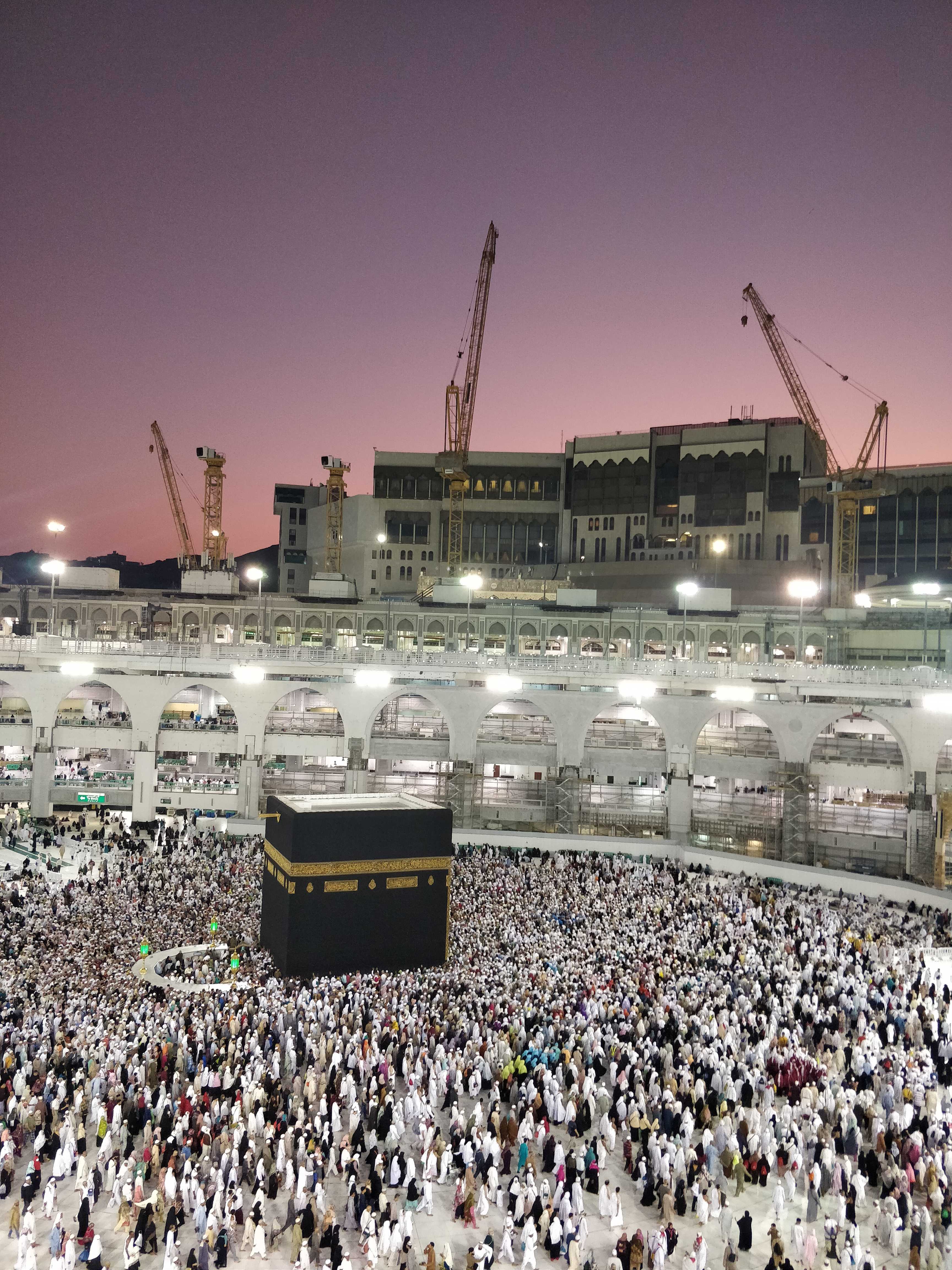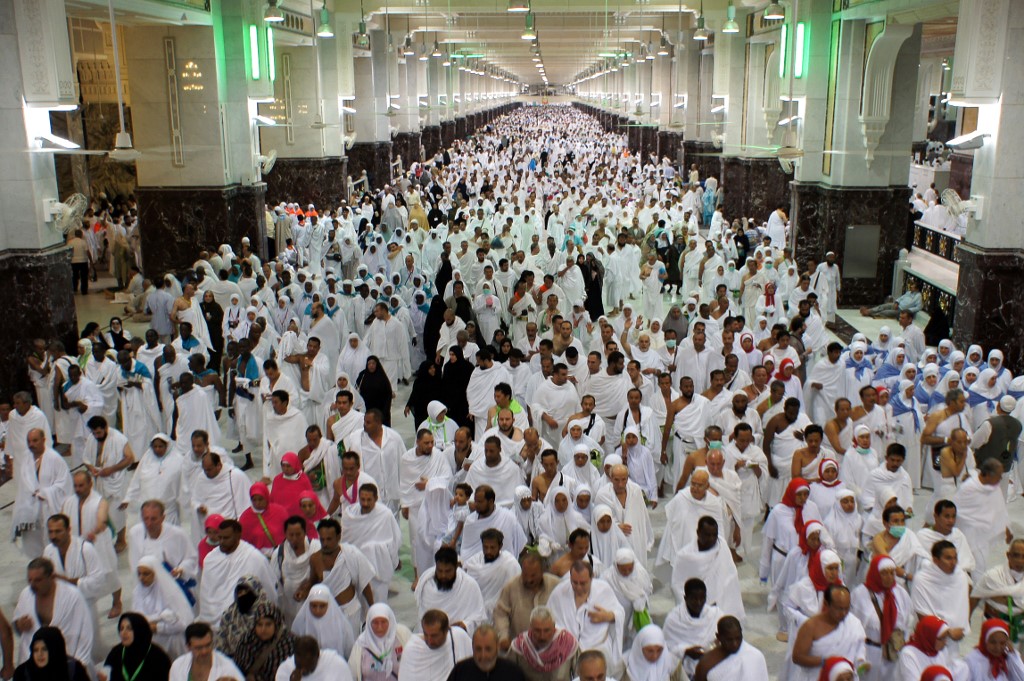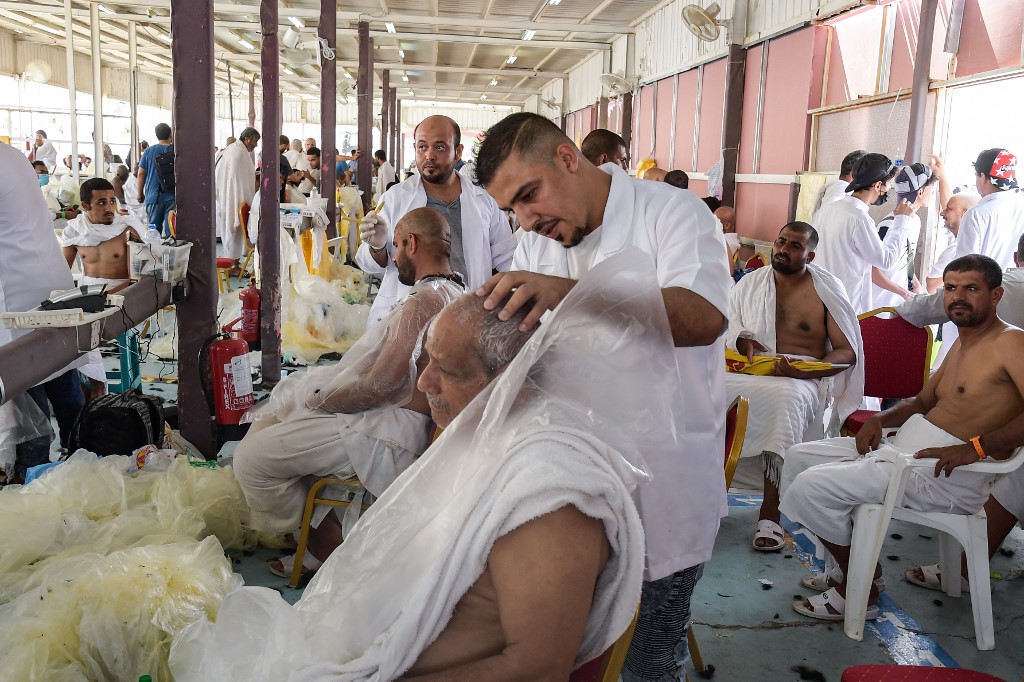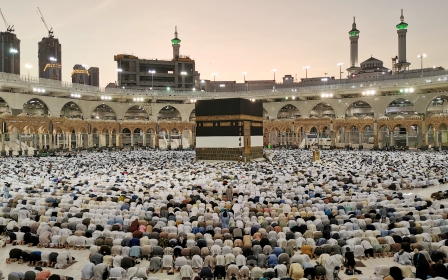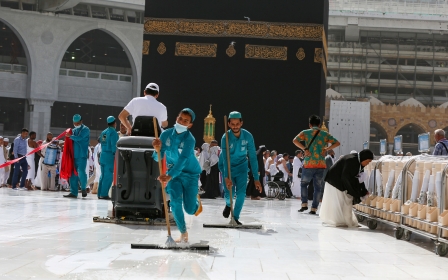What is Umrah? The Islamic pilgrimage explained

Islam’s oldest and most holy site, Mecca, located in Saudi Arabia’s western Hijaz province, is an important location for Muslims around the world.
This is where the Quran, the holy book of Islam, is believed to have been revealed to the Prophet Muhammad.
New MEE newsletter: Jerusalem Dispatch
Sign up to get the latest insights and analysis on Israel-Palestine, alongside Turkey Unpacked and other MEE newsletters
As Saudi Arabia issues a temporary ban on Umrah pilgrimages to the holy cities of Mecca and Medina for Saudi citizens and the kingdom's residents due to concerns over coronavirus, Middle East Eye explains what the lesser known pilgrimage is all about.
What is Umrah?
Umrah is the name given to a pilgrimage to Mecca, a shorter version of the annual Hajj gathering. The word “Umrah” in Arabic means “visiting a populated place”.
Umrah offers an opportunity for Muslims to refresh their faith, seek forgiveness and pray for their needs. One who performs it is said to be cleansed of their sins.
What are the main differences between Umrah and Hajj?
Umrah is voluntary but Hajj is compulsory for those who are physically well and can afford it.
Hajj is one of Islam’s five pillars, and Muslims who are able to must perform it at least once in their lifetime.
Umrah can be performed throughout the year, but Hajj is performed only at a specific time, between the 8th and the 13th of Dhul Hijah, the last month in the Islamic lunar calendar.
Umrah is almost a spiritual “quick-fix” and can be completed in under two hours, depending on how busy it is. Hajj is a more intense experience over several days.
Hajj is one of the largest annual gatherings of people in the world, with more than two million pilgrims attending each year from around 188 countries. Umrah, which is known as the “smaller” pilgrimage, might be performed by several million pilgrims each year, most probably due to it being cheaper and quicker to complete.
The focal point for both pilgrimages is the Kaaba, the black boxed structure located in Mecca’s large mosque complex known as Masjid al-Haraam. It is also in the direction of the Kaaba that Muslims face when offering their five daily prayers, wherever they are in the world.
Both Umrah and Hajj share the same set of core devotional acts, although there is a more extensive set of rituals expected during Hajj.
How can pilgrims travel to Umrah?
Worshippers from outside Saudi Arabia usually travel in by plane and need to apply for a special Umrah visa that is valid for a month. They must also have a meningitis vaccination, along with the right paperwork to prove it.
Travellers from neighbouring countries may cross borders by car, but will also need a visa.
For Saudis and those already living and working within the country, no special documentation is needed.
Muslims of any age can perform Umrah and Hajj, and there are no restrictions on how many times someone can make the journey in their lifetime.
But women under the age of 45 must be accompanied by a mahram, a male family member or relative, above the age of 17. Women over 45 are permitted to travel with tour groups, without the need of a mahram.
Surrounding the Masjid al-Haraam complex are a range of hotels - from budget-friendly to seven-star establishments.
For those staying further away, most hotels offer a free shuttle bus service to the holy site, anticipating the arrival of pilgrims.
When can pilgrims go on Umrah?
It can be performed at any time of the year, apart from the five days when Hajj takes place.
Most pilgrims go during the holy month of Ramadan, or in the two Islamic lunar months leading up to it, Rajab and Sha’ban, which are also considered to be sacred.
Muslims believe that there is increased mercy and acceptance of prayers during these holy months, when there is also a greater reward for acts of worship.
Are there any rules during Umrah?
A pilgrim has to be in a state of Ihraam, which derives from the Arabic word harama, which means forbidden.
The naming reflects the belief that pilgrims, during Umrah (and Hajj) need to enter a spiritual state of almost human perfection. There can be no quarrelling, cursing or bad language. No animal can be harmed - even the killing of an insect will break the state of Ihraam and nullify Umrah.
Pilgrims cannot cut, shave or pluck any hair, cut their nails, wear make-up or perfume or use any additional products. To do any of these would invalidate Ihraam according to Islamic jurisprudence.
The next step is to recite their intention to go on Umrah aloud. This is usually done when an individual reaches the Meeqat (entry points to Mecca marking the start of observing the Ihraam). The pilgrims then offer a prayer and must stick to the rules above until they complete their pilgrimage.
What do people wear during Umrah?
Ihraam also dictates what pilgrims wear. It symbolises the equality of all of mankind before God. It signifies that no gender, nationality, or status can make one person superior to another.
For men, it is two sheets of unstitched white cloth, one covering the lower half of the body tied around the waist, and the other is draped around the upper half of the body and shoulders. No undergarments or additional clothing are worn with the Ihraam.
For footwear, men wear sandals and must keep their head uncovered.
Women can wear any long, loose-fitting garment that is simply designed. Many opt for a plain black abaya - a long-sleeved loose dress that covers the entire body - and a simple hijab, or head covering. The face cannot be covered.
How do you perform Umrah?
(i) Recite your intentions: While walking towards the Kaaba, pilgrims follow the practice of Islam’s Prophet Muhammad, and recite the Talbiya, announcing their arrival and stating the oneness of God.
Labbayka llāhumma labbayk(a), labbayka lā sharīka laka labbayk(a), inna l-ḥamda wa n-ni’mata, laka wa l-mulk(a), lā sharīka lak.
(Translation: At Your service, Allah, at Your service. At Your service, You have no partner, at Your service. Truly all praise, favour and sovereignty is Yours. You have no partner.)
Upon entering Masjid al-Haraam, the mosque-complex housing the Kaaba, pilgrims enter with their right foot and make a supplication, asking God for his mercy and forgiveness.
(ii) Undertake tawaaf: The pilgrims circle the Kaaba seven times in an anti-clockwise direction in deep prayer. It starts at the Kaaba’s eastern point where the Black Stone is located, which is said to date back to the time of Adam and Eve, and is highly revered by Muslims.
Tawaf can take 20 minutes when the mosque is not busy, but much longer when it is, and pilgrims may have to circulate around the upper balcony floors of the Haraam.
The purpose is to show devotion to God and demonstrate the unity between worshippers.
(iii) Pray: Pilgrims pray and recite verses from the Quran at the Maqam Ibrahim - The Place of Abraham - a few metres away from the Kaaba. They then go to a water-point to drink zamzam, considered to be holy water.
(iv) Sa’ii:
Just a few minutes walk away from the Kaaba are Mount Safa and Mount Marwa, where Muslims recite prayers walking back and forth between the two mountains, seven times. The total distance covered is two miles and the time it takes to complete depends on the pilgrim's ability and fitness.
The act of sa’ii honours the Quranic story of Haajar, the wife of Prophet Ibrahim (or Abraham from the Bible), who is said to have wandered tirelessly between the mountains of Safa and Marwa in search of water for her infant son Ismail (Ishmael), in a barren desert.
As Hajjar ran between mountain tops, Muslims believe, the Angel Gabriel struck the ground and holy water came gushing out, saving the baby’s life. Pilgrims still drink from this same water well today.
Following the completion of sa’ii, pilgrims then offer a final prayer.
(v) Taqsir: Many male pilgrims then undergo taqsir, which is known as the shortening of hair, in one of the many barber shops surround the area of Masjid al-Haraam.
Shaving the head is regarded as symbolising rebirth and the completion of [ending] their pilgrimage. Female pilgrims cut a small amount of their hair, equal to the length of a fingertip.
This point marks the end of the Umrah and pilgrims are no longer required to adhere to the regulations of Ihraam.
Middle East Eye delivers independent and unrivalled coverage and analysis of the Middle East, North Africa and beyond. To learn more about republishing this content and the associated fees, please fill out this form. More about MEE can be found here.


